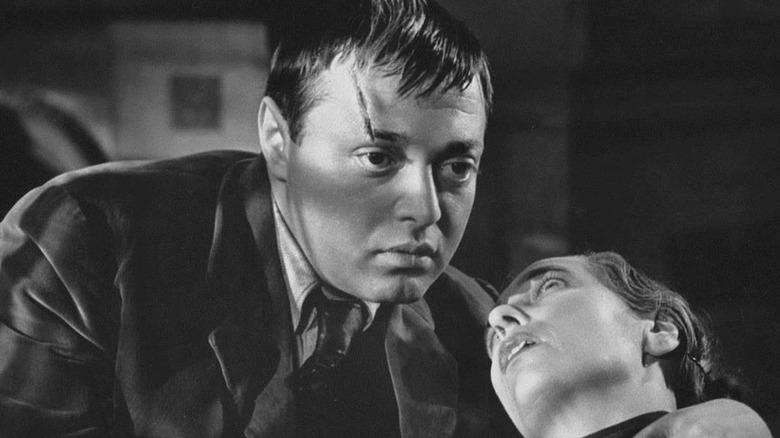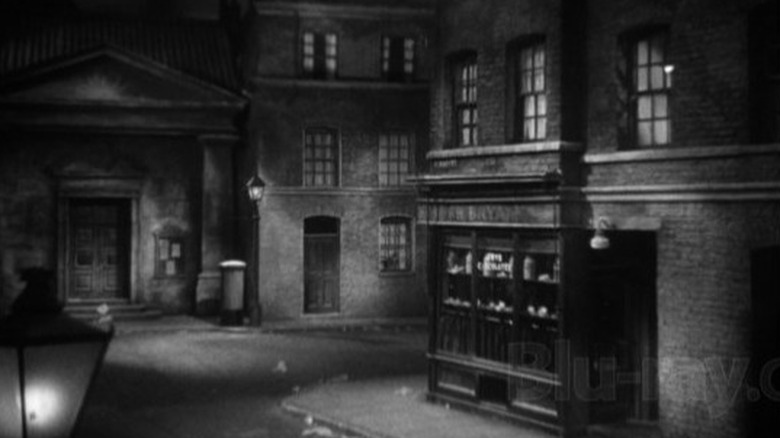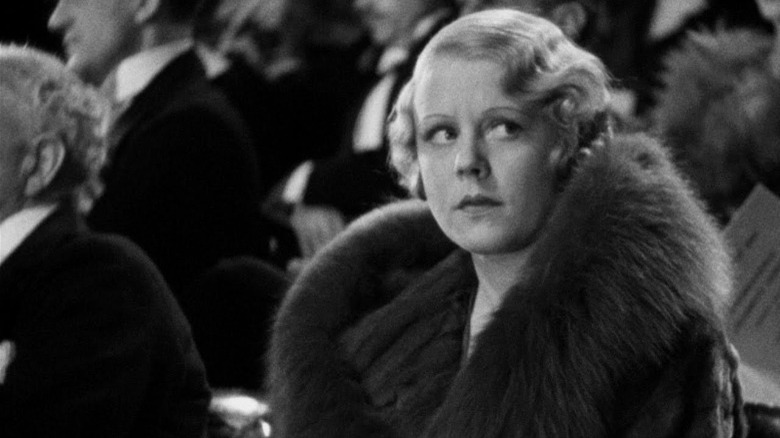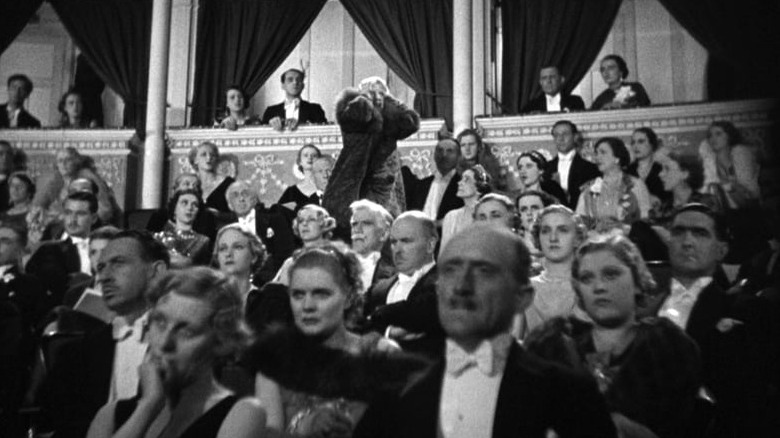Russian Anarchists And Winston Churchill Had Censors Worried About The Man Who Knew Too Much
It may not have Doris Day singing "Que Sera, Sera" like its 1956 remake, but Alfred Hitchcock's original 1934 film "The Man Who Knew Too Much" represents some of the master's best work before he came to Hollywood. It's got the Hitchcock magic, that strange movie logic that doesn't need to make complete sense to be wildly entertaining. Like so many of the movies he made later, it embraces some classic beats: a man on the run, complex international intrigue, and as much suspense as he could wring out of every moment.
It also opens with a moment of surprising levity, following British couple Bob and Jill Lawrence (Leslie Banks and Edna Best) on their holiday in the Swiss Alps. When their French friend Louis (Pierre Fresnay) is mysteriously shot while dancing, he divulges a crucial secret to Jill — where to find a note with dangerous information about the planned assassination of a European head of state by international criminals. That is where the "too much" of the title comes from. And then their child is kidnapped.
This being a Hitchcock film, most of the intrigue is nonsensical and fun, more of an excuse for colorful suspense scenes than anything realistic. One thing the filmmaker hadn't counted on was the government censors. They quickly noticed an unmistakable resemblance between the shootout at the movie's end and a real-life London shootout involving international criminals in 1911: the Siege of Sidney Street. And the censors gave Hitchcock trouble.
The Siege of Sidney Street
Only a few years had passed since Alfred Hitchcock had really established his reputation (and consequent issues with studios). For someone practically writing the cinematic grammar of thrillers, it made sense for him to draw from history, and the Siege of Sidney Street sounds an awful lot like a classic Hitchcock movie.
History UK notes that the Siege took place over a cold London winter, in January 1911. But the events that led to it had begun in December 1910.
In particular, it began on the Houndsditch thoroughfare, the London street that had gained notoriety at the turn of the century for its wide-ranging markets. When a neighbor heard the sounds of a robbery at the jewelry store next door, he alerted the local police force. The police proved ineffectual — two of the three sergeants suffered gunshot wounds that cost them their jobs. The other lost his life. When the ringleader of the robbers was killed by friendly fire, his associates ran off.
As it turned out, he was involved with a Latvian anarchist group, known only as Leesma (meaning "flame"), that was expropriating jewelry to help finance the Bolshevik Revolution. An informant (presumably a landlord) revealed the location of two members to the police on New Year's Day, 1911: Sidney Street. Their Mauser pistols proved superior to any weapons the unarmed police could bring. But Home Secretary Winston Churchill called in an army detachment, whose rifles practically set the building on fire.
One anarchist was shot through the window. The other died in the fire.
How Hitchcock remembered it
The scenario was dramatic and ripe for cinematic depiction. Not only would Alfred Hitchcock adapt it for the climax of his 1934 film "The Man Who Knew Too Much," it would be conflated with other London-based crimes by Latvian revolutionaries in a 1960 film appropriately called "The Siege of Sidney Street."
Hitchcock would come to bitterly recall his choice of adaptation in the classic interview book, "Hitchcock/Truffaut." That book put him face-to-face with French New Wave luminary Francois Truffaut, and would reveal such gems as Hitchcock's least favorite Hitchcock film. It also revealed how censors swarmed on his plans for "The Man Who Knew Too Much." As he recalled the Siege, "some Russian anarchists were holed up in a house and were shooting."
Even if he played the incident exactly as it had gone down in real life, he would have had troubles with censors. To them, he claimed to Truffaut, the incident was "a blot on the record of the British police," which meant they were already skeptical of any representation. When Hitchcock proposed that the British police could be armed in his film (as they weren't in the real Siege), they opposed that as well. Eventually, he asked how the police were supposed to get the spies out in the movie, and, he claims, the censors suggested water hoses. Just as Churchill apparently did.
They would have to reach a compromise.
Getting past the censors
While "The Man Who Knew Too Much" approaches the story from a much different angle, it ends at the same place: a building in London, with two European criminals holed up, defending themselves from police. As Abbott (Peter Lorre) and Ramon (Frank Vosper) are finally cornered, their assassination attempt having gone awry, they shoot endlessly from their window. After Bob and Lisa rescue their child, the police storm the building, and the day is saved.
The police action is surprisingly forceful, and a major change from what had happened at the real Siege. As it turns out, the censors had their own idea for a compromise. According to "Hitchcock/Truffaut," the censors' plan was to show the police going to a local gunsmith to get antique weapons, as a means of making it clear that the police weren't used to using firearms. HItchcock found that "ludicrous."
Instead, he simply showed the flash of a truck handing rifles to the police. Once he'd gotten the go-ahead to equip his fictional police, all bets were off. The end result was a tough, suspenseful scene that gave its characters and situations a sense of deserved gravity. While Hitchcock would go on to find innovative and even more creative ways to eke out suspense from dangerous situations (as in the classic crop duster scene in "North by Northwest"), he also excelled in more straightforward scenarios like this. Drawing from reality helped too.



